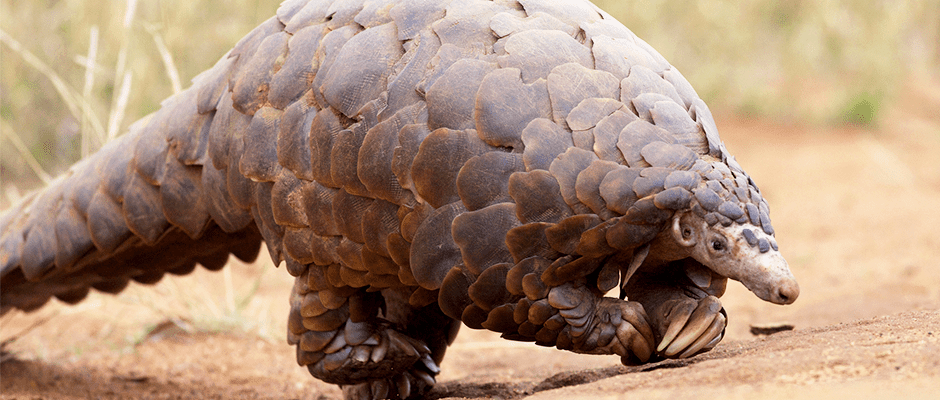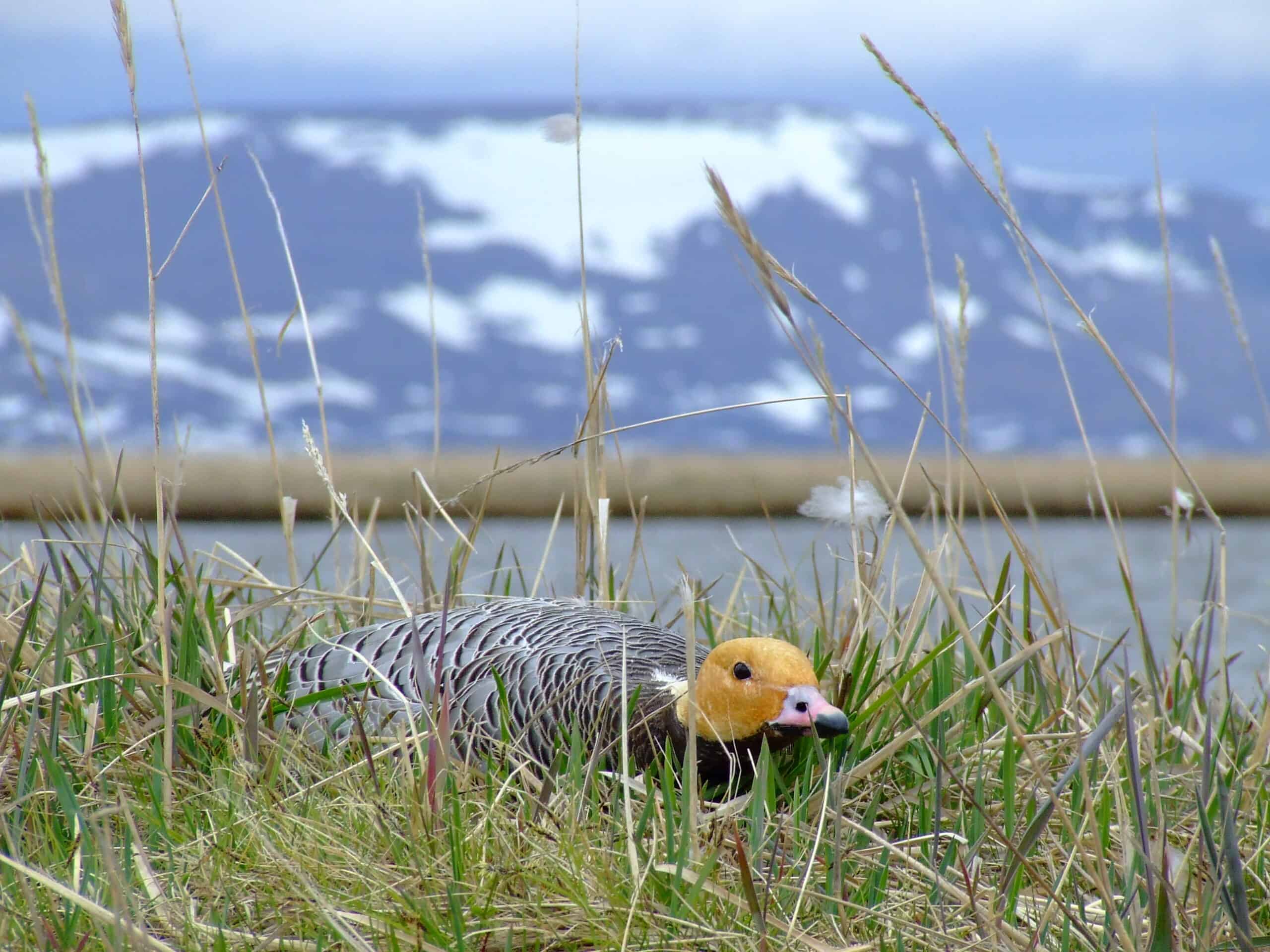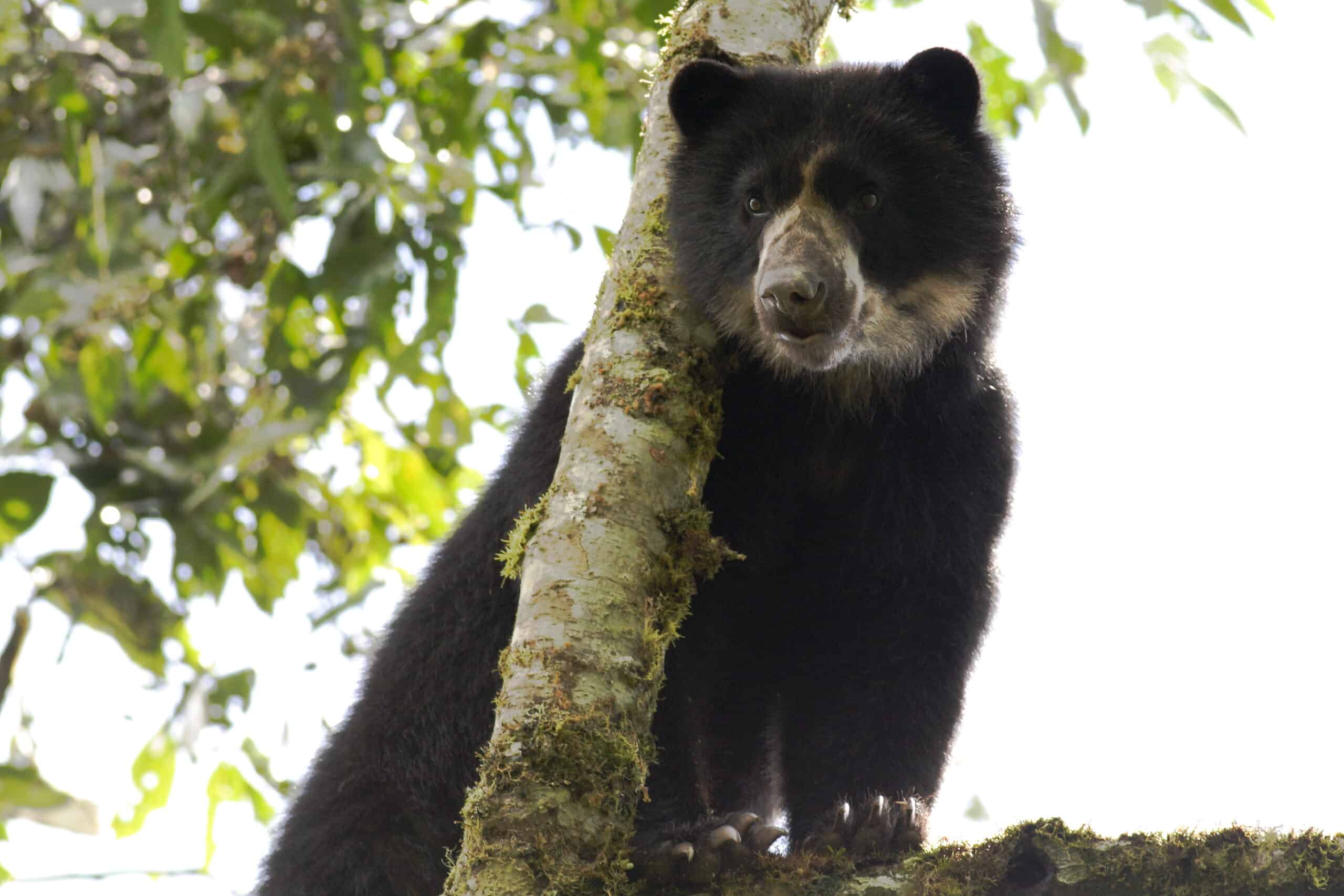Share this article
Hollywood’s spotlight can have real-life conservation impact
Did “Bambi” do in hunting? Did “Jaws” demonize sharks? Did “Finding Nemo” put clownfish in serious danger?
In a paper published in Conservation Biology, researchers from Great Britain’s University of Exeter and Lancaster University found the “Hollywood effect” can have a real impact on wildlife featured on the big screen, and it’s one that conservation scientists should pay attention to.
“We weren’t suggesting that Hollywood movies become message films about conservation,” said co-author Matthew Silk, of the Environment and Sustainability Institute at the University of Exeter’s Penryn Campus in Cornwall, “but there are ways in which there could be productive working relationships between conservationists and filmmakers.”
Silk said he and his colleagues decided to investigate the effects of movies on conservation after taking in Disney’s live-action remake of Rudyard Kipling’s “The Jungle Book.” The film featured a cameo appearance by a pangolin (Pholidota spp.), an order of scaly ant-eating mammals in Africa and Asia threatened by hunting, deforestation and animal trafficking. It’s endangered in real life, and in the film, Baloo the Bear threatens his pangolin companion, “You have never been a more endangered species than you are at this moment.”
“We sat there laughing longer than we should have and far longer than anyone else in the cinema,” Silk said. Later, they realized, they might have tuned in to something more serious about the role of movies and conservation. Cinema, they realized, could have a powerful effect on biodiversity conservation, either positively or negatively.
“One of the main things we found was, nobody really studies this stuff,” said co-author Sarah Crowley, but they were able to tap into new resources, like Google Trends, to get an idea of what people are searching for after the movies come out.
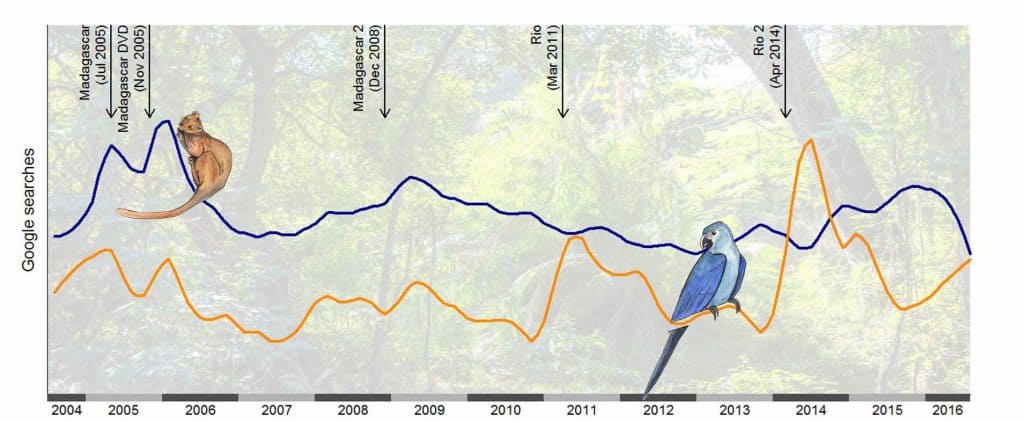
Google Trends data showed an increase in web research on fossas after the animal was featured in the movie “Madagascar,” and Spix’s macaw after it appeared in the film “Rio.”
The cartoon “Madagscar,” for instance, led to a surge in searches for the catlike fossa (Cryptoprocta ferox). After seeing “Rio,” people Googled the featured Spix’s macaw (Cyanopsitta spixii). The movie “Finding Dory” prompted searches for blue tangs (Paracanthurus hepatus) like the main character.
“The ‘Bambi effect’ is kind of the early example of this,” Crowley said. While it’s not clear if the 1942 film actually turned people off hunting or if it reflected changing attitudes toward it, she said, several films that followed did seem to have conservation impacts.
The movie “Jaws” seems to have promoted a fear of sharks that led to “likely consequences for shark conservation,” researchers found.
“Finding Nemo” is widely believed to have led to an increased demand for clownfish (Amphiprion ocellaris) ownership that increased pressure on wild populations, they said, although documented evidence is “virtually non-existent.”
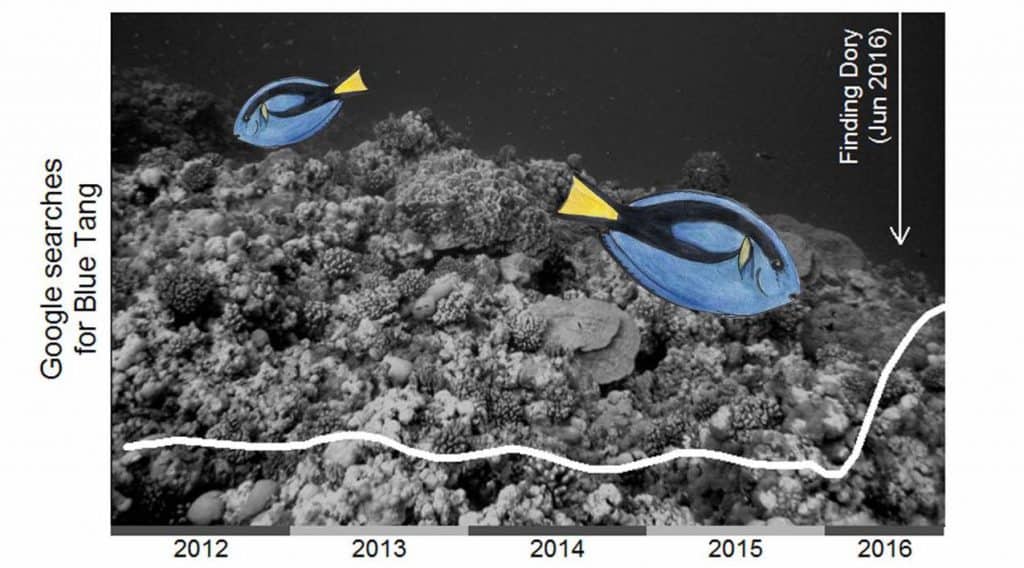
Using Google Trends data, researchers found a surge in internet interest in blue tangs after the release of the film “Finding Dory.”
Other films intentionally set out to make a point about conservation. “Happy Feet” carried a strong message about overfishing and plastic pollution. In making “Finding Dory,” Disney Pixar worked with the Association of Zoos and Aquariums to avoid the impacts attributed to “Finding Nemo” by promoting responsible fish buying, researcher said. And that pangolin appearance in “The Jungle Book” was no accident. Director Jon Favreau reportedly took the suggestion of Los Angeles Zoo staff to include the creature as a way to raise awareness.
“We’re trying to promote the positivity of it,” Crowley said. “Obviously there is some concerning potential for impacts, but we found there’s a lot of opportunity for research and lots of opportunity for collaboration.”
That could include filmmakers using conservation advisors they way many already use science advisors, they said. For scientists, researchers said, it may simply mean doing baseline research and being prepared for the impacts the “Hollywood effect” may bring on wildlife — positive or negative.
Header Image: A pangolin’s appearance in the movie “The Jungle Book” brought attention to the animal’s endangered status. ©David Brossard



